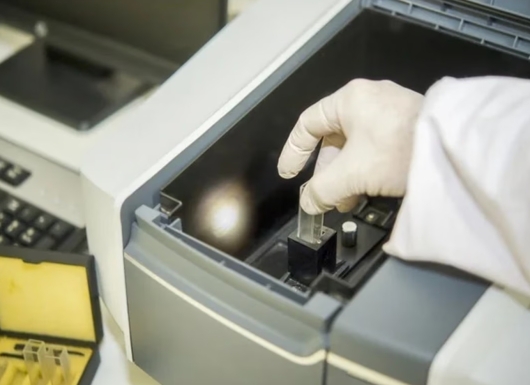Submitter: (ICRISAT)
Rapid soil assessment using the Diffuse Reflectance Spectroscopy technique enables the rapid estimation of soil properties. This method delivers soil health results within minutes in a non-destructive manner. It eliminates the use of chemical reagents, making the process safer, more environmentally friendly, and cost-effective. It predicts multiple soil properties simultaneously. A single scan provides information on multiple soil properties, including physical, nutrient, and biological indicators. The approach can be applied in both on-site field settings and laboratory settings, offering flexibility in implementation. It supports immediate, location-specific fertilizer and amendment recommendations based on actual soil conditions.

The initiative comprises three main components: i) building robust spectral libraries through the collection of diverse soil samples across various ecologies, land uses, and cropping systems for accurate prediction of soil properties using chemometric models; ii) capacity and awareness building through targeted training for farmers and extension workers to interpret soil test results and apply appropriate agronomic practices; and iii) pilot demonstrations to showcase the practical use of crop-specific soil health recommendations.
This approach is helpful as it offers a scalable, low-cost, and rapid alternative to conventional soil testing, enhances fertilizer use efficiency, improves crop productivity and soil health, empowers stakeholders with actionable data, and supports integrated land and water resource planning.
DRS holds strong potential across diverse agroecological zones and can be effectively applied at plot, village, and national scales to support comprehensive soil assessment and monitoring. Its ability to rapidly estimate multiple soil properties without the need for chemical reagents makes it ideal for resource-limited settings, while its scalability enables integration into large-scale soil health programs, precision agriculture platforms, and land restoration initiatives.
DRS is a low-cost, non-destructive, and chemical-free method that enables rapid analysis of multiple soil properties from a single scan. Its portability and speed make it especially suitable for scaling in resource-constrained and decentralized agricultural systems, including those with fragmented landholdings. The method has already proven its ability to handle high-throughput testing, particularly in smallholder farming contexts (Uttar Pradesh), enabling broad coverage with limited infrastructure. Because it does not rely on complex chemical procedures or large laboratory setups, it can be deployed at the plot, cluster, and national levels with minimal logistical burden. Its adaptability makes it relevant not only for standard soil testing but also for precision agriculture, land restoration, and soil carbon monitoring programs.
What’s Needed for Adoption
i) Locally calibrated spectral libraries;
ii) Training for field technicians and extension agents;
iii) Policy recognition as an accepted alternative to lab testing
Dr. Israr Majeed
Phone: +917235988363,
Email: israrmajeed.reshi@icrisat.org
Prof. Bhabani Sankar Das (IIT Kharagpur)
Phone: +91-9434025413
Email: bhabani99@gmail.com